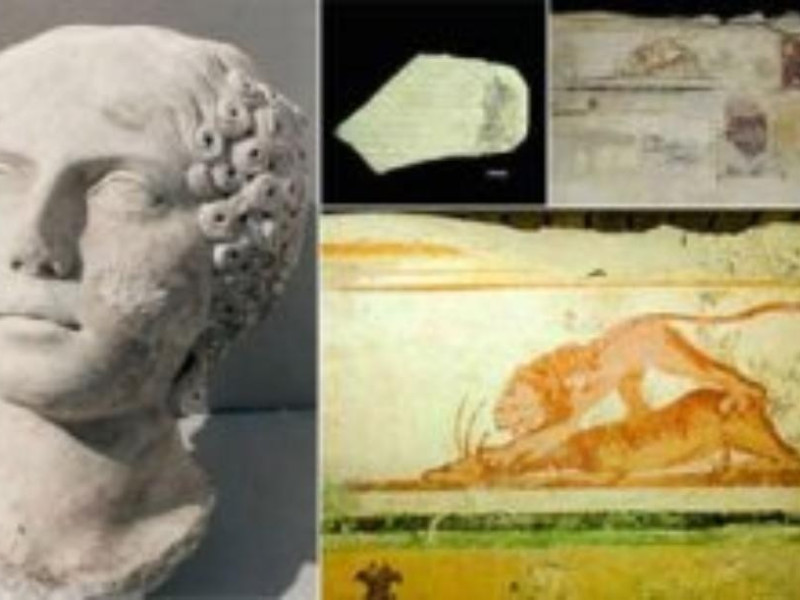Destinazioni - Comune
Urbisaglia
Where
Urbisaglia (Macerata)
Urbisaglia is a comune in the province of Macerata, Marche, Italy. Its name comes from the ancient Roman town Urbs Salvia.
History
Situated in the Regio V Picenum, along the via Salaria Gallica, the town was founded during the 2nd century BC as a colonia. Its importance reached the top with Augustus and Tiberius, when it was completely rebuilt.It gave birth to some leading figures of the Roman Empire, such as the consul C. Fufius Geminus and Lucius Flavius Silva Nonius Bassus, the conqueror of Masada. It was utterly destroyed by Alaric in 408–10 AD, and both Procopius (E.G. II. 16, 17) and Dante Alighieri (Paradise, XVI. 73 - 78) talk about its desolation.
During the following centuries, the inhabitants of Urbs Salvia gradually moved to the top of the hill, giving rise to the Castro de Orbesallia. In the 12th century, a very important religious, economic and cultural centre was founded nearby, the Abbey of Fiastra, which had to influence the Fiastra Valley and the surrounding area.
Between 12th and 14th century, the town was ruled by the Abbracciamonte family; they slowly sold the town to the Comune of Tolentino, which became its only owner. After Francesco Sforza's signoria (1433–43), Urbisaglia came back under Tolentino's domination. Tolentino was given the papal permission to build a rocca, to prevent any rebellion attempt; in 1507 Tolentino sent a 12 soldiers garrison to defend the fortress. In 1569, after petitioning the Pope Pius V, the inhabitants of Urbisaglia were given the autonomy from Tolentino; the town was directly placed under Holy See's dependency.
The first diggings in the Roman town took place during tha papal government; after Italy's unification the standard of living has been getting better, thanks to the industrial development, permitting the rise of a spinning mill and both a hosiery and a soap factory.
Thanks to the benefactors Angelo Buccolini, Innocenzo Petrini and the marquis Alessandro Giannelli, the town was provided with a nursery school, an old people's home and a Mount of piety.
During the Fascism the town was given the name of "Urbisaglia Bonservizi" in honour of Nicola Bonservizi, a journalist born in Urbisaglia and a Mussolini's collaborator, killed in Paris by an anarchist. Urbisaglia was the site of an internment camp throughout the Second World War; it was placed at Giustiniani Bandini Palace, next to the Abbey of Fiastra.
In 1968 it became a titular diocese of the Catholic Church.
Today Urbisaglia has more than 2,700 inhabitants, working in agriculture, arts and crafts, textiles, power plants and iron and steel industry.
Main sights
Archaeological Park of Urbs Salvia
Abbey of Chiaravalle di Fiastra
Rocca di Urbisaglia
Chiesa della Maestà
San Lorenzo Collegiate church
Chiesa dell'Addolorata
War Fallen Monument and Weaponry and Military Uniforms Museum
Archaeological Park of Urbs Salvia
Officially recognized as archaeological park in 1994, it spread over an area of about 40 hectares (100 acres), and it is the most important one in the Marche.
Just outside the medieval city walls, a walk descends through the park for about 1.5 kilometres (0.93 mi). It affords views of the scale and topography of the ancient town, starting at the top of the hill and reaching the flat valley bottom, bounded on the east side by the Fiastra river.
You can visit the Reservoir, the Theatre, the Niched Building, the Sanctuarial complex Temple-Criptoporticus dedicated to the goddess Salus Augusta and the Amphiteatre built by Lucius Flavius Silva Nonius Bassus. The city walls are well visible too, preserved along several hundred metres.
Every year in July and August, a season of classical drama takes place at the amphitheatre.
Rocca di Urbisaglia
The medieval fortress of Urbisaglia was a military fortification erected by the town of Tolentino at the beginning of the 16th century.
It was built upon the ruins of previous fortifications on the west corner of the Roman wall of Urbs Salvia. Its imposing position at the centre of the urban area suggests that the Arx (the citadel, the most protected area of the town) or the Capitol of the Roman town was once located here, as demonstrated by substantial remains of Roman walls and of composite concrete.
It has a trapezoidal shape with the longest side facing away from the town in order to better face potential attacks. There are four corner towers, a gate tower and a keep where the garrison Tolentino had imposed on Urbisaglia resided. Indeed, the fortress's main function, other than to control the surrounding areas, was to guard the town and to prevent any rebellious acts from the citizens of Urbisaglia who resented Tolentino's power over them.
Sources
Bacchielli L., Ch. Delplace, W. Eck, L. Gasperini, G. Paci. Studi su Urbisaglia romana. Supplementi a PICUS. Tivoli, 1995.
Giuseppe Ferranti. Guida al territorio di Urbisaglia. Pro Manoscritto a cura di Urbsalviambiente. Urbisaglia, 1994
Miria Salvucci, Giovanna Salvucci (et al. ). Urbisaglia. Urbs Salvia, Capolavori in corso. Urbisaglia, 2003.
See also
Archaeological Park of Urbs Salvia
Rocca di Urbisaglia
Abbey of Chiaravalle di Fiastra
External links
(Italian) Comune di Urbisaglia - istitutional site
(Italian)TAU - Teatri Antichi Uniti

